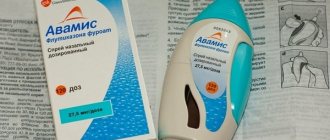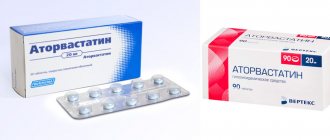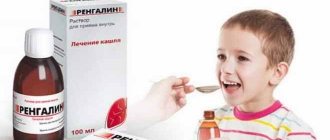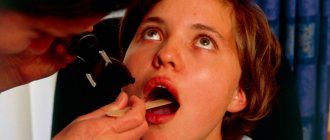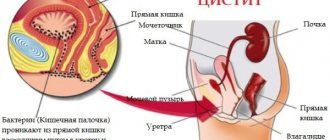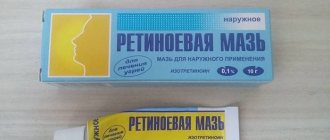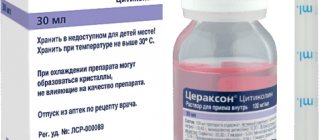Mechanism of action
The active compound of the drug is the antibiotic gramicidin.
It has a detrimental effect on pathogenic microflora that causes inflammatory diseases in the oral cavity. No addiction to the medication was detected. A properly selected composition increases the secretion of saliva, thereby cleansing the oral cavity of decay products of pathogenic microflora.
What properties does the drug have:
- antiseptic – treats the oral cavity, preventing the proliferation of bacteria and the development of the inflammatory process;
- the presence of lidocaine helps eliminate discomfort during swallowing;
- the antibiotic acts as a disinfectant.
Contraindications to the use of "Grammidin"
Lozenges are contraindicated in the following cases:
- individual intolerance to active substances,
- children under 4 years old,
- first trimester of pregnancy,
- phenylketonuria,
- lactation period.
Topical spray is not recommended for use in the 1st–3rd trimester of gestation. The drug is prescribed with caution to patients under 12 years of age. If treatment is necessary during lactation, breastfeeding should be stopped. If there are open wounds or ulcers in the oral cavity, the tablets cannot be used, since cetylpyridinium hydrochloride slows down the regeneration of soft tissues.
Pregnant women should only use the drug if the potential benefit to the mother's health outweighs the risk to the development of the fetus. Before starting treatment, you should consult your doctor.
What are the release forms?
Pharmaceutical company employees offer several forms of the popular drug:
- Grammidin (spray, tablets). The dosage of the active compound is 1.5 milligrams. The second form has a convex appearance, yellow or white in color.
- Grammidin Children's is widely used in the treatment of diseases in children.
- Grammidin Neo is produced in the form of white tablets. It contains the maximum amount of active substance – 3 milligrams. There are from 6 to 9 pieces in a package.
- Grammidin with anesthetic.
- Neo Grammidin with active anesthetic.
There are only 5 types of medicine, they differ in the presence or absence of certain additional substances, since there is only one active compound - Grammidin C. The main distinguishing feature is the color scheme on the packaging. For example, red stands for Grammidin with anesthetic and Grammidin Neo, yellow for children. Produced in the form of tablets intended for resorption.
For the convenience of treating the throat, the medication is available in the form of a spray. Regardless of the type of drug, the drug has the same analgesic effect and prevents the development and proliferation of pathogenic microflora.
Medical opinion
Next, you should indicate what kind of reviews among practicing doctors the drug “Grammidin” with an anesthetic was able to generate:
- Many doctors buy this drug for their home medicine cabinet. This is an excellent antiseptic for the throat and mouth, suitable for treating all family members. The cost of the product is slightly higher than that of analogues, but it is worth it. If you use the drug strictly according to the instructions, you can quickly feel the expected effect. The tablets must be dissolved thoroughly. An antiseptic will help alleviate the condition of sore throat, pharyngitis, and infectious diseases of the gums. The drug has a pleasant mild taste.
- The drug "Grammidin for children", reviews of which are heard more and more often, is one of the few medications prescribed for the treatment of children. Its balanced, safe composition helps to quickly eliminate throat diseases in children starting from the age of four. The product has a pleasant taste, and therefore children take these lollipops with pleasure.
- Many practicing dentists prescribe this drug to their patients to treat oral diseases. It effectively relieves the acute phase of inflammation, helps heal ulcers and wounds. Complex therapy becomes much more effective.
- Grammidin neo tablets are the only remedy that can be purchased at a pharmacy without fear without providing a prescription form. It is truly safe if the intake is completely consistent with the recommendations given in the instructions.
Pharmacological properties
Pharmacodynamics
Grammidin neo is used to treat infectious and inflammatory diseases of the mouth and throat. The drug contains gramicidin C (an antimicrobial component) and cetylpyridinium chloride (an antiseptic component).
Gramicidin C increases the permeability of the cytoplasmic membranes of microbial cells, which disrupts their stability and leads to death. It has a pronounced antimicrobial effect against pathogens that cause infectious diseases of the oral cavity and pharynx.
Cetylpyridinium chloride is an antiseptic that inhibits the reproduction and growth of pathogenic microorganisms that cause diseases of the mouth and throat.
Grammidin neo alleviates discomfort and pain in the throat, reduces inflammation, facilitates swallowing, produces an antimicrobial effect, and when the tablets are dissolved, it causes increased salivation, which contributes to the mechanical cleansing of the oral cavity and pharynx from pathogenic microorganisms.
Pharmacokinetics
The systemic effect of the drug is almost absent, since the active components are practically not absorbed in the gastrointestinal tract.
Side effects
According to the annotation, there are few side effects of children's Grammidin, but they still exist. One of the most dangerous is an allergic reaction. It can manifest itself easily (rash, hives, itching), and in some cases - quite seriously (anaphylactic shock, fever, swelling of the lips, face, Quincke's edema). Such consequences are quite dangerous not only for the child’s health, but also for his life, therefore, before you start taking the medicine, you need to make sure that the baby is not allergic to the components contained in the drug.
In addition to allergies, the medicine can cause numbness in the mouth and temporary loss of taste.
Side effects are quite rare during therapy with children's Grammidin.
Causes of a sore throat
Most often, a sore throat is the result of:
- acute inflammation of the tonsils, which is also called tonsillitis or acute tonsillitis;
- exacerbation of chronic tonsillitis;
- inflammation of the pharyngeal mucosa (pharyngitis).
The most common causative agents of colds are viruses and bacteria (staphylococci, streptococci, pneumococci, anaerobic bacteria). The likelihood of infection by pathogenic microorganisms increases in conditions of reduced immunity, to which concomitant chronic pathologies, hypothermia, and an unbalanced diet low in vitamins predispose. It is especially difficult for residents of large cities, since with a large number of people it is difficult to avoid contact with an infected person.
That is why, during periods of cold weather and epidemics of colds, it is necessary to be prepared for quick response measures and keep the best medicine for a sore throat on hand.
Characteristics of diseases
Regardless of the diagnosis, the tablets are taken according to a specific regimen described in the instructions or prescribed by a doctor. To understand whether you need this remedy, you need to know the main symptoms of the diseases for which it is used.
With sore throat, the lingual, nasopharyngeal, and palatine tonsils become inflamed. The disease is accompanied by fever, weakness and severe pain in the throat when swallowing. In this case, the mucous membrane turns bright red. The disease is also often accompanied by aching joints.
Pharyngitis is called inflammation of the mucous membranes of the pharynx. With this disease, there is noticeable discomfort in the throat area, pain, and soreness. It can be viral, allergic, bacterial, fungal, traumatic.
Doctors divide laryngitis into acute and chronic. This is the name for inflammatory disease of the larynx. It usually develops with various acute respiratory infections, influenza and other viral diseases. Laryngitis is characterized by the vocal cords becoming swollen and unable to vibrate. Because of this, it is difficult for a person to speak, his voice changes. The disease is accompanied by a barking cough and difficulty breathing.
Inflammation of the tonsils is called tonsillitis. Symptoms of this disease include a roller-like expansion of the edges of the arches of the palate, the appearance of adhesions between them and the tonsils. In addition, purulent-caseous plugs or liquid pus are visible on the tonsils, and they themselves are modified and covered with scars.
Stomatitis is characterized by the formation of ulcers in the mouth. The reasons for their appearance are not really known, but it is believed that this is a reaction of the immune system to certain irritants.
The drug "Grammidin" can also be prescribed for gingivitis. This is the name given to the inflammatory process on the gums that occurs as a result of the accumulation and proliferation of bacteria between them and the teeth.
Grammidin for the treatment of throat
So, it is clear that the throat hurts during the cold season due to infectious inflammation. The severity of the pain syndrome may vary. In some cases, it is a moderate pain that appears only when swallowing, and in others it is intense, painful, and does not stop for a minute.
Taking into account the different degrees of pain syndrome, medications (drugs) for throat disease should be chosen differentially.
Grammidin for throat is available in four different versions:
- Grammidin Neo. This product contains the antibiotic gramicidin C and the antiseptic cetylpyridinium chloride in an optimal dose for adults. Grammidin Neo is available in a package with a green scarf.
- Grammidin Neo with anesthetic (packaging with a red scarf). Additionally contains the local anesthetic oxybuprocaine.
- Grammidin for children (packaging with a yellow scarf). This is an antibiotic with an antiseptic in a dosage ideal for children.
- Grammidin spray - contains an antibiotic in combination with an antiseptic in a dosage form that allows you to treat “hard-to-reach places” of the throat.
Which Grammidin to choose if you have a sore throat?
For moderately severe sore throat and sore throat, adult patients should pay attention to Grammidin Neo (green scarf).
Children aged 4 to 12 years are recommended to take Grammidin in a children's dosage (yellow scarf), especially if the child prefers the taste of raspberries.
Grammidin with an anesthetic (in a package with a red scarf) will help cope with intense sore throat, which causes severe discomfort. For this purpose, it is also suitable for children starting from 4 years of age.
Spray Grammidin has the same properties as Grammidin Neo, it is suitable for those who prefer sprays to tablets and love the effect of “irrigating” the throat.
Side effects of "Grammidin"
Side effects may include allergic reactions: skin rash, itching, swelling of the larynx, rhinitis. In severe cases, anaphylactic shock develops. Grammidin tablets with Oxybuprocaine have a local anesthetic effect, so temporary numbness of the tongue may occur. Negative manifestations disappear after stopping the medication.
It should be borne in mind that the drug enhances the effect of other antimicrobial agents and antibiotics. Treatment does not affect the ability to drive vehicles or perform work with complex mechanisms that require increased attention.
In case of an overdose, the functioning of the gastrointestinal tract is disrupted: diarrhea, nausea, and vomiting occur. In such cases, you should stop taking the drug and consult a doctor immediately.
Lozenges "Grammidin" are an effective antimicrobial agent for the treatment of diseases of the throat and oral cavity. The complex drug is prescribed for symptomatic treatment of adults and children; the course of therapy is 7 days. If adverse reactions occur, the medication should be stopped.
Pharmacological properties
Pharmacodynamics
The composition of Grammidin spray with anesthetic includes three active components: gramicidin C (has antimicrobial properties), cetylpyridinium chloride (antiseptic) and oxybuprocaine (has a local anesthetic effect).
Gramicidin C increases the permeability of the cytoplasmic membrane of microbial cells, which disrupts their stability and leads to death. Active against a wide range of gram-negative and gram-positive bacteria.
The mechanism of action of cetylpyridinium chloride is due to its ability to suppress the reproduction and growth of pathogens of various infectious diseases of the oral cavity and pharynx.
Oxybuprocaine has a local anesthetic effect. It reversibly blocks the conduction and propagation of nerve impulses through the axons of nerve cells located in the mucous membrane of the mouth and throat.
Grammidin tablets with anesthetic contain two active components: gramicidin C (has an antimicrobial effect) and lidocaine (local anesthetic). When the drug is absorbed, salivation increases, which additionally helps cleanse the oral cavity and pharynx from inflammatory exudate and microorganisms. The analgesic effect appears immediately at the moment of resorption of the tablets and persists for another 30–40 minutes after taking the drug. Auxiliary components (eucalyptus oil and menthol) reduce inflammation, soften discomfort and facilitate swallowing food in case of infectious diseases of the oral cavity and pharynx. Menthol promotes additional pain relief and enhances the effect of lidocaine hydrochloride. Aspartame and mannitol improve the taste of the tablets.
Grammidin with an anesthetic can be used in patients who have contraindications or restrictions on taking sugar and sugar-containing medications.
Pharmacokinetics
When sprays and lozenges are applied topically, the active ingredients of the drug are almost not absorbed into the blood through the mucous membrane of the mouth and pharynx.
Grammidin - application
The instructions for the drug say that these tablets are not recommended for oral administration, but are intended for resorption. During the process of slow dissolution, the active substances spread throughout the entire oral cavity, and during swallowing they settle on the walls of the pharynx and concentrate in the saliva, due to which a pronounced effect is achieved. Using Grammidin for resorption several times a day, strictly following the instructions, you can ensure that the required concentration of active components in saliva is maintained throughout the entire period of treatment. Therefore, it is important not to miss appointment hours.
How to take Grammidin tablets?
Lozenges should be used 1-5 times a day
depending on indications, age and dosage form.
It is very important to take into account the timing of meals, otherwise there is a high risk of reducing the effectiveness of treatment to zero. Grammidin tablets are intended for use as follows: 2-3 hours before a meal or immediately immediately after it
. This will allow you to maintain the concentration of active substances in saliva for the maximum possible period.
How long can Grammidin tablets be used?
The course of treatment lasts from 1 to 6 days
. A lot depends on the severity of the disease and how accurately the patient follows the rules recommended by the instructions. If Grammidin tablets are used correctly, the regimen and dosage are followed, the resorption time depends on the moment of food intake, then the effectiveness of therapy increases. Otherwise, its result will be less significant, or even zero. If the disease is accompanied by a rise in body temperature, weakness, apathy, it is recommended to seek help from a specialist.
Indications for use and therapeutic effect
All drugs included in the Grammidin line have a single list of indications. Medicines have been developed to treat the following diseases:
- tonsillitis - an acute infectious process that occurs with inflammation of the components of the lymphatic pharyngeal ring;
- tonsillitis - a disease in which the tonsils become inflamed;
- pharyngitis is an inflammatory process affecting the mucous membrane and lymphoid tissue of the pharynx;
- periodontitis is an inflammatory disease of periodontal tissues;
- gingivitis is an inflammatory process that affects the gums;
- stomatitis - damage to the mucous membrane lining the oral cavity, the occurrence of ulcerative formations.
Drugs from the Grammidin line with antibiotics cause the gradual death of pathogens that cause infectious diseases of the mouth and pharynx. Thanks to this, during the period of medication use, the inflammatory process decreases, the sore throat becomes less severe, and swallowing becomes easier.
Drugs similar in composition
Before you start looking for analogues of a medicine prescribed by a specialist, you should take into account that the risk of complications after illness increases many times over. If Grammidin was prescribed, it means that it is the one that is able to most effectively resist infection.
Among drugs similar in composition, one can o.
Also, a similar therapeutic effect is achieved using the following medications:
- “Askosept” (banana or pineapple flavored lozenges);
- "Septolete";
- "Lizobakt";
- "Doctor Mom" (plant blades);
- "Adgisept";
- "Faryngosept".
The only reason for replacing the drug prescribed by the doctor can be the presence of an allergy to children's Grammidin. Otherwise, you need to follow the prescribed recommendations. Not all medications for pain and inflammation in the throat have an antibiotic effect. If a specialist considers it necessary to prescribe Grammidin, then the degree of damage to the mucous membrane is very extensive and conventional herbal medicines can no longer be used.
Indications and contraindications
For what diseases is Grammidin most effective? The medication is prescribed for severe sore throat, but there are other indications for prescribing the medication:
- periodontal disease is an inflammatory process in the tissues located around the teeth;
- tonsillitis, in which purulent inflammation occurs in the tonsils, caused by streptococci and staphylococci;
- Tonsillitis is an inflammatory process of an infectious nature that forms in the larynx;
- gingivitis – bacterial damage to the gums;
- with pharyngitis - the development of a bacterial process in the pharynx.
The medication is also effective for laryngitis (an inflammatory process that occurs on the mucous membranes of the larynx).
Despite many positive properties, the drug has a number of contraindications:
- individual intolerance to components;
- breastfeeding a newborn.
During pregnancy, the drug must be used with extreme caution and under the close supervision of a doctor. If you need to use Grammidin during breastfeeding, then you should stop feeding your baby breast milk.
Conditions of release and storage
The drug can be freely purchased at any pharmacy without a doctor's prescription, but this should not be done. There are known precedents for allergic reactions to both the active and auxiliary components of Grammidin. Your attending physician, based on data from all previous cases of drug allergies in you or your child, will be able to give a competent recommendation on the choice of antiseptic to treat a sore throat.
Grammidin is stored in a dry, cool and dark place for no more than 2 years from the date of manufacture, which is indicated on the cardboard packaging.
Features of use in lactating and pregnant women
The use of Grammidin during pregnancy is acceptable, but there are some risks. If there are certain doubts, the medication should be replaced with one that is similar in effect, but gentle.
Before taking it, a woman should make sure that there are no contraindications or intolerance to certain components. This can be done by your doctor. He will help you choose a gentle treatment regimen, making sure to reduce the dosage and frequency of administration.
If you exceed the specified dosage, you will definitely need to visit the ultrasound room. This test helps determine whether the baby has been harmed.
In the first trimester, experts recommend stopping taking Grammidin. In the 2nd and 3rd trimester, the medication will harm the fetus only if treated independently and unsupervised.
Contraindications
The medicine does not have many contraindications. In general, it is well tolerated by children and works well. The following can be noted as contraindications:
- intolerance to the components contained in the drug;
- phenylketonuria;
- lactation;
- open wounds of the oral cavity;
- age up to 4 years.
During pregnancy, the drug is allowed to be used to treat the throat, but strictly as prescribed by a doctor and under his supervision. The medicine Grammidin is a topical drug; when consumed, it penetrates only into the oral cavity, so the risk of an undesirable effect on the fetus is practically reduced to zero. If you take a smaller dosage and do not abuse the drug, the medication will not cause a negative effect on the embryo.
It is also necessary to strictly ensure that the expectant mother does not have an allergic reaction to the medicine.
Although the drug is local, it contains an antibiotic, which is still dangerous for an infant. Some doctors believe that the medicine passes into breast milk. However, there is an opinion that the remedy cannot harm either the mother or the child. If you have any doubts about whether to take the drug during lactation or not, it is better to refrain from taking Grammidin during this period. You can also temporarily stop feeding while taking the medicine, resuming lactation after stopping treatment. And if you still decide to undergo treatment with the drug, then you should do this under the strict supervision of your doctor.
Drug interactions
As for the interaction of Grammidin with other drugs, the drug is capable of enhancing various effects of many other antibiotics, which are prescribed both locally and systemically.
The drug is produced by a pharmaceutical company in the form of tablets that are either white or white-yellowish in color. One standard cardboard package contains two plastic blisters, ten small tablets each.
The medicine contains the active substance, as well as several additional components. The antibiotic gramicidin C with the addition of cetylpyridinium chloride and oxybuprocaine is the main component of the tablets. Inactive ingredients include: calcium stearate, lactose, sugar and methylcellulose.
Description of the main drug
Regular Grammidin® produced by a Russian company is gramicidin C, a synthetic antibacterial substance isolated from the waste product of the soil bacterium Bacillus brevis. The auxiliary ingredients are lactose, sugar, calcium stearate and methylcellulose. The dosage of the active substance for each of the 20 tablets in the package is 1.5 mg.
At the moment, the following products of Valenta Pharmaceuticals® OJSC are presented in pharmacies:
- Grammidin Neo® – in addition to 3 mg of gramicidin, contains the antiseptic cetylpyridinium chloride, which expands the spectrum of antimicrobial activity of the drug and has a bacteriostatic effect. The average price is 253 rubles for 18 tablets.
- Grammidin Neo® is an analogue with an anesthetic, in which, in addition to antiseptic and antibacterial components, oxybuprocaine is added, which has a rapid local anesthetic effect. Mannitol and aspartame are used as sweeteners, which makes it possible to prescribe the medicine to people with diabetes. Eucalyptus oil and menthol improve taste and reduce inflammation. 18 tablets in a pack cost 240 rubles.
- Grammidin® for children – a combination of 1.5 mg of gramicidin with 1 mg of antiseptic, sorbitol, aspartame and raspberry flavor. A reduced dose of antibiotic allows this drug to be prescribed to children. The cost of a package of 18 tablets. – 266 rub.
All of the listed medications are prescribed for bacterial infections of the pharynx such as tonsillitis, tonsillitis, pharyngitis, as well as for the treatment of diseases of the oral cavity and gums - gingivitis, periodontitis, stomatitis.
The drugs have few contraindications: first of all, these include hypersensitivity to any component, the period of breastfeeding and the age of the child under 4 years of age (children's Grammidin® is not allowed until 2 years of age). Pregnant women are advised to refrain from taking it during the first trimester. There is only one possible side effect - an allergic reaction due to individual intolerance.
You need to dissolve the tablets an hour or two before meals, while the maximum daily dose for an adult is 4 pieces, for a child 4-12 years old - 2, and for kids you can also take two, but for children. Interaction with other antibacterial drugs (both systemic and local) is expressed in mutual enhancement of therapeutic properties.
Read further: Instructions for use of Grammidin S® tablets and reviews
How is red Grammidin different from green?
Modern medicine offers the consumer a large selection of medicines used in the treatment of infectious and inflammatory diseases of the throat and oral cavity.
The drug Grammidin has demonstrated high effectiveness in the fight against such ailments. When you buy it, you immediately notice that the packaging shows scarves of different colors.
An inexperienced consumer immediately faces a dilemma: which Grammidin to choose - red or green? Understanding this issue is not at all difficult.
What is the difference between red Grammidin and green?
The active ingredient of the drug is the antibiotic gramicidin
, which has a pronounced bactericidal and bacteriostatic effect.
In other words, it not only destroys microbes, but also prevents their reproduction and growth.
Gramicidin demonstrates effectiveness against staphylococci, streptococci, pathogens of anaerobic infection and is intended for topical use.
The medicine is a combination drug and is produced in the form of small white lozenges.
Grammidin Neo is produced in a package with a green scarf shown, which contains the above-mentioned gramicidin in a dosage of 3 mg/tab. and antiseptic cetylpyridinium chloride
. Thus, the combination of an antibiotic with an antiseptic provides a double effect in the fight against inflammation.
The difference between green Grammidin and red is that the latter additionally contains an anesthetic - oxybuprocaine hydrochloride
. This triple action of the drug allows not only to suppress the activity of pathogenic microorganisms, but also to significantly reduce pain in the event of severe inflammation.
| gramicidin C - 3 mg | |
| cetylpyridinium - 1 mg | |
| Oxybuprocaine - 0.2 mg (as hydrochloride) | — |
Both drugs have identical indications for use and are prescribed for the following diseases:
- stomatitis and/or associated diseases of the oral cavity.
- sore throat and tonsillitis (as part of complex treatment);
- gingivitis;
- periodontal disease;
- pharyngitis;
For children, Grammidin Neo or Grammidin Neo with an anesthetic can only be prescribed upon reaching the age of four.
It is strongly recommended not to eat or drink anything for one and a half to two hours after the tablet has completely dissolved.
The drug is produced in the Moscow region, the manufacturer is Valenta Pharmaceuticals.
Contraindications and differences in treatment costs
| Up to four years; in the first trimester. pregnancy (in the II and III trim. not recommended); during breastfeeding (stop breastfeeding if taken); with hypersensitivity to components. |
The difference in price between red Grammidin and green is insignificant. Thus, a five-day course of treatment with Grammidin Neo with a green scarf on the package will cost only five percent less.
Therefore, when choosing a drug, you should focus primarily on the severity of pain and decide for yourself about the need for local analgesia.
In conclusion, it must be added that this drug has the ability to enhance the effect of various antimicrobial agents, and therefore is actively used in the complex therapy of the diseases described above.
Source
Cost of the drug
The popularity of the product “Grammidin for children” is due to the fact that while it is quite effective, it is not too expensive. So, a pack of 18 tablets (for children) will cost 190 rubles. For a course of treatment for a child under 12 years of age, this amount is quite sufficient. But an adult may need 2 packages of the usual Grammidin product. Its price is about 200 rubles. This amount of the drug is enough for about 5 days (almost a course).
A package of Grammidin Neo, the tablets of which contain 3 mg of the antibacterial agent gramicidin C, is enough for 5 days of therapy. It is dissolved 1 piece 4 times a day. Considering that the cost of the product is about 210 rubles, it is considered more profitable.
Can a nursing mother take grammidin? Nursing mother.
Grammidin - instructions for use
The drug Grammidin is a local antiseptic intended for the treatment and relief of symptoms of inflammation in the mouth and pharynx. It is often used to combat seasonal colds and dental problems. High efficiency, ease of use and affordable price have made Grammidin lozenges one of the people's most favorite remedies for sore throats. Today we will tell you in detail about the composition of this drug, its correct use and possible contraindications.
Pharmacological action and composition of Grammidin
The name of the Grammidin brand is consonant with the main active component of this drug - the antibiotic gramicidin C. It has a very wide spectrum of bactericidal action, and quickly copes with almost any microbes that infect the human oral cavity, gums and pharynx. This antibiotic is often used not only by therapists and pediatricians, but also by dentists.
Resorption of the tablets promotes abundant salivation, and thanks to this, the antibiotic quickly and evenly spreads throughout the oropharynx. Saliva helps to wash away microbial waste products, which is also important for a speedy recovery. Grammidin weakens the cell membrane of bacteria, and they quickly die. And several medicinal forms of the drug make its use as convenient as possible.
Release form of Grammidin
The drug is available in three forms:
Grammidin is a yellowish-white suckable tablet, each containing 1.5 mg of the antibiotic gramicidin C, as well as a number of excipients (lactose, sugar, methylcellulose, calcium stearate). The tablets are in blisters of 10 pieces, each cardboard package contains two blisters;
Grammidin Neo are convex-shaped suckable tablets with menthol flavor, with the inscription “GR” on one side. In addition to the antibiotic gramicidin in a dosage of 3 mg, they added another active substance - cetylpyridinium chloride. This component softens the pain in the sore throat that occurs when swallowing. Excipients of Grammidin Neo: silicon dioxide, potassium acesulfate, magnesium stearate, menthol, sorbitol and talc. The drug is available in blisters of 6 or 9 pieces, which are packed in cardboard boxes of 4 or 2 blisters, respectively;
Grammidin with anesthetic - convex-shaped suckable tablets with the taste of lemon, black currant or raspberry. Here, to 1.5 mg of the antibiotic gramicidin, 10 mg of the anesthetic lidocaine is added, which perfectly relieves acute sore throat with sore throat. Excipients: eucalyptus oil, citric acid, hydroxypropylcellulose, menthol, aspartame, mannitol and fruit flavor. The tablets are packaged in the same way as Grammidin Neo.
Indications and contraindications for use
Drugs from the Grammidin series are prescribed for the treatment of the following inflammatory diseases:
Grammidin - Instructions
Active ingredients:
Dosage form:
paste for topical use, solution for local and external use [alcohol], lozenges, buccal tablets
Pharmachologic effect:
An antibacterial agent that has a bacteriostatic (Streptococcus pneumoniae. meningococcus, gonococcus, anaerobic pathogens) and, in high concentrations, a bactericidal effect on Streptococcus spp. and Staphylococcus spp. Increases the permeability of the microbial cell membrane for inorganic cations due to the formation of a network of channels in the lipid structures of the membrane, which causes the development of osmotic instability of the cell.
Water and fat solution: purulent wounds, bedsores, ulcers, burns, osteomyelitis, joint trauma, empyema, phlegmon, carbuncle, boil (washing, irrigation of bandages and tampons). Alcohol solution: pyoderma. As part of combination therapy: infected eyelid eczema, blepharitis, meibomitis (styre), scleritis, episcleritis, iridocyclitis, iritis, otitis externa. Buccal tablets - infectious and inflammatory diseases of the mouth and throat: acute pharyngitis, tonsillitis, tonsillitis, periodontal disease, gingivitis, stomatitis. Paste - local contraception, burns, wounds.
Contraindications:
Hypersensitivity, dermatoses (for external use), lactation period. With caution. Pregnancy.
Side effects:
Allergic reactions, contact dermatitis, with parenteral administration - hemolysis, phlebitis.
Directions for use and dosage:
Locally. To prepare an aqueous solution, a 2% solution is diluted 100-200 times with sterile distilled or ordinary drinking water. To prepare a fat solution, a 2% solution is diluted with castor oil, fish oil, and lanolin 25-30 times. Used for washing and irrigating bandages and tampons. To prepare an alcohol solution, a 2% solution is diluted 100 times with 70% ethanol. For pyoderma, lubricate the skin with an alcohol solution 2-3 times a day. Buccal tablets. 3 mg (2 tablets) one after another (with an interval of 20-30 minutes) are slowly dissolved in the mouth 4 times a day; per course - 15-30 mg. Paste for topical use. Apply a thin layer to the affected surface and cover with gauze. The dressings are changed after 2-4 days. As a contraceptive drug, 5-6 g are injected into the vagina with a special syringe.
Special instructions:
An aqueous solution of gramicidin can be consumed within 3 days after preparation. Injecting solutions into a vein is not allowed - hemolysis and the development of phlebitis are possible.
Interaction:
Enhances the effects of other antimicrobial drugs.
Before using Grammidin, consult your doctor!
Tatiana Selezneva: 28.01 / 16:25
how to take grammidin
Dynamo man In spirit: 30.01 / 04:50
Grammidin is prescribed after meals. The tablet should be dissolved in the mouth. Do not chew. After use, do not eat or drink for 1-2 hours. Dosage, starting from the age of 12 years - 2 tablets (one after the other with an interval of 20-30 minutes) - 4 times / day. Children under 12 years old – 1-2 tablets 4 times a day. Duration of therapy is 5-6 days.
Pharmacological properties Grammidin is an antibacterial drug for local use in the oral cavity and pharynx. Has a pronounced antimicrobial effect. In high concentrations, it has a bactericidal effect on most gram-positive and gram-negative microorganisms - causative agents of infectious diseases of the oral cavity and pharynx. Increases the permeability of the microbial cell membrane, which disrupts its stability and death. The drug is practically non-addictive to microorganisms sensitive to it. When absorbed, it enhances salivation, helping to cleanse the oropharynx of microorganisms and inflammatory exudate. Indications for use: Infectious and inflammatory diseases of the mouth and throat, accompanied by severe pain: acute pharyngitis, tonsillitis, tonsillitis, periodontitis, gingivitis, stomatitis. Contraindications Hypersensitivity to the components of the drug, lactation period. Use with caution during pregnancy Method of administration and dosage Grammidin tablets are used after meals, by dissolving in the mouth without chewing. Immediately after using the drug, you should refrain from eating and drinking for 1-2 hours. Dosage for children over 12 years of age and adults: 2 tablets (one after the other for 20-30 minutes) 4 times a day. For children under 12 years of age: 1-2 tablets 4 times a day. Course of treatment: 5-6 days. Side effects During use of the drug, due to its anesthetic effect, temporary loss of sensitivity of the tongue is possible. In some cases, allergic reactions to the components of the drug are possible.
Analogues of the drug
Grammidin is considered an affordable drug because it has a low cost. The medicine contains effective agents that help with inflammatory processes in the throat. In some cases it causes an allergic reaction.
Therefore, the tablets require replacement with other medications:
| Name | Basic properties |
| Inaglipt spray | Antibacterial medicine intended for the treatment of infectious diseases of the throat. This particular drug has anti-inflammatory and analgesic effects. Used for various infectious diseases. Contraindicated for children under three years of age, pregnant women and breastfeeding. |
| Lugol | The main substance of this drug is iodine, which has a bactericidal effect, that is, it kills germs that attack the throat. Iodine is a remedy that every person needs. However, it is contraindicated during pregnancy and children under five years of age. The advantage of this medicine is that it can be used to prevent thyroid disorders. Disadvantage: the specific taste of the drug, which causes a gag reflex in children. The price is acceptable. |
| Miramistin | An antiseptic that is considered a good drug. Advantage of Miramistim: neutral taste; allowed to be taken by pregnant women and children; does not cause irritation. The price is comparable to Grammidin. |
| Kameton | A good anti-inflammatory medicine. Effectively copes with viruses in the oral cavity. Has an anesthetic effect. Due to the absence of sulfonamides, it is allowed to use it during pregnancy. Prescribed to children from four years of age. It tastes good. However, it is not prescribed for sore throat and pharyngitis. It is used not only for irrigating the throat, but also nasally. |
Special Recommendations
Before you start taking the drug, you should read the instructions. It contains several recommendations that are worth paying special attention to:
- "Grammidin" in all forms does not affect the speed of psychomotor reactions.
- Patients with diabetes should be aware that the drug contains sugar.
- The use of the drug enhances the effectiveness of antibiotics. Quite often, drugs are prescribed along with other medications, but this may require dosage adjustments.
"Grammidin" is available without a doctor's prescription, but before use you should consult a specialist.
How does it affect lactation and the baby during feeding?
According to the instructions, Grammidin should not be taken during breastfeeding . It is known that the components included in the composition are able to penetrate into milk and affect the baby, and the tiny body may not be ready for such a load. But, there are cases when doctors still prescribe this drug. If a nursing mother or child has hypersensitivity to the components of this medicine, then its use is contraindicated.
It is often recommended to transfer the child to artificial nutrition for the duration of treatment, and it is worth expressing milk in order to restore the process of natural feeding after treatment.
Adverse reactions
Various forms of "Grammidin" can cause the following adverse reactions:
Adverse reactions do not require specific treatment. Therapy involves eliminating symptoms and discontinuing the drug. As the instructions indicate, “Grammidin NEO with anesthetic” can cause all of the reactions listed above. To date, no cases of drug overdose have been identified.
Analogs
There are quite a few drugs that have a similar effect to Grammidin with anesthetic. In particular, the most popular drug substitutes are:
- "Lugol". It is produced in the form of a spray and solution. The drug contains iodine, which has high antiseptic qualities. Using the drug is not very convenient, and many people do not like its taste.
- "Faryngosept". Lozenges based on the antibiotic ambazone.
- "Stopangin." A spray that has the property of preventing the development of harmful microorganisms thanks to hexetidine. The drug actively affects pathogens of fungal infections.
- "Strepsils". Produced in the form of lozenges for sucking. It has a pronounced anesthetic and antiseptic effect thanks to dichlorobenzyl components.
- Inhalipt." A spray containing norsulfazole, mint and eucalyptus oils, as well as streptocide.
- "Kameton." It is produced in the form of an aerosol, the main components of which are camphor, eucalyptus oil and chlorobutanol.
- "Gorpils." Presented as lozenges for resorption. The active component is amylmetacresol, which has a pronounced antiseptic effect.
- "Doritricin." It has a combined effect on bacteria due to the presence of benzocaine and benzalkonium in the composition.
Contraindications and side effects
Contraindicated in people with sensitivity to components:
- lidocaine hydrochloride;
- gramicidin C;
- eucalyptus oil;
- calcium stearate;
- citric acid;
- Hydroxypropylcellulose Klucel (hyprolose).
Grammidin can cause side effects in the body such as allergies and urticaria. Due to the anesthetic content, temporary loss of sensitivity of the tongue is possible. This medicine does not have systemic side effects because it is not absorbed into the gastrointestinal tract, having only a local effect. It is known that there have been no cases of overdose with this drug.
Instructions for use and dosage
- The drug is given to the child only after meals.
- The tablet should be kept in the mouth for a long time so that it dissolves very slowly and affects the mucous membrane.
- You should not chew this medicine, as this will affect its therapeutic effect.
- After the medication has completely dissolved, do not eat or drink anything for at least 1 hour, and preferably for 2 hours.
- In childhood, Grammidin is given 4 times a day.
- For a child 4-12 years old, one tablet will be a single dosage.
- Children over 12 years of age are given two tablets per dose. The second is used 20-30 minutes after the child has swallowed the first tablet.
- The maximum permissible dose of medication per day for children under 12 years of age is four tablets, and for a teenager over 12 years of age - 8 tablets.
- If a child takes the medication for a week and no positive effect is observed from the medication, you should consult a doctor.
Grammidin during pregnancy and breastfeeding
The drug is contraindicated for use during breastfeeding, since the active substances in small quantities pass into breast milk and cause a number of negative consequences that will affect the baby over time.
It is forbidden to take all types of this drug during the first trimester of pregnancy, since the fetus is not yet formed and can be harmed.
In the second trimester, you can take pills only when necessary and no other means help. You can also take grammidin and grammidin with an anesthetic, but only if it does not harm the unborn child.
You should consult your doctor about taking the drug. You should not self-medicate.
How does it affect lactation and the baby during feeding?
According to the instructions, Grammidin should not be taken during breastfeeding . It is known that the components included in the composition are able to penetrate into milk and affect the baby, and the tiny body may not be ready for such a load. But, there are cases when doctors still prescribe this drug. If a nursing mother or child has hypersensitivity to the components of this medicine, then its use is contraindicated.
If the attending physician prescribed Grammidin and did not recommend switching the baby to formula, you need to carefully monitor the baby, if you notice changes in behavior or a deterioration in the child’s general well-being, you should stop using the drug.
It is often recommended to transfer the child to artificial nutrition for the duration of treatment, and it is worth expressing milk in order to restore the process of natural feeding after treatment.
Recommendations for safe use
A nursing mother must strictly adhere to the dosage, time and frequency of taking Grammidin. The rules for use are prescribed by the attending physician; self-medication will only harm the woman and child. Often 1 tablet is prescribed 4 times a day. The tablet is dissolved in the mouth, after which it is forbidden to drink or eat for two hours . Treatment with this drug should last no more than 6 days; if your health does not improve, you should inform your doctor.
Various drugs during lactation can be dangerous for mother and baby. It is important for a woman to strengthen her immune system so as not to take medications during infectious and viral diseases. Every second medicine is full of chemicals; the child’s body is growing and may be unable to cope with this type of load. Drug abuse is fraught with intestinal disorders, poisoning of both mother and child, and even immunodeficiency of the body. Be healthy!
Contraindications and side effects
Contraindicated in people with sensitivity to components:
- lidocaine hydrochloride;
- gramicidin C;
- eucalyptus oil;
- calcium stearate;
- citric acid;
- Hydroxypropylcellulose Klucel (hyprolose).
Grammidin can cause side effects in the body such as allergies and urticaria. Due to the anesthetic content, temporary loss of sensitivity of the tongue is possible. This medicine does not have systemic side effects because it is not absorbed into the gastrointestinal tract, having only a local effect. It is known that there have been no cases of overdose with this drug.
Interaction with other tools
If you approach treatment comprehensively, you are unlikely to limit yourself to purchasing only Grammidin tablets. The price of this drug is quite affordable; many people purchase it in cases where they need to get rid of unpleasant sensations in the throat and mouth.
This remedy can also be combined with other medications. It can enhance the effectiveness of local and systemic antimicrobial drugs.

